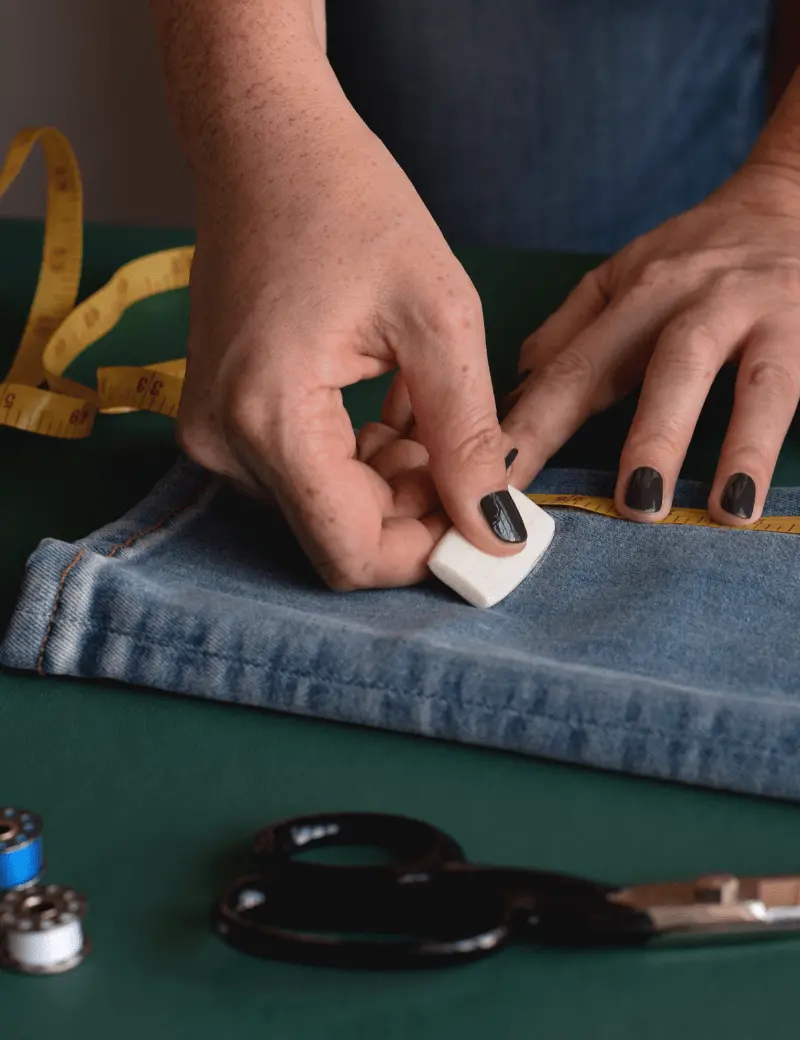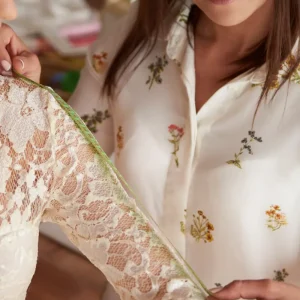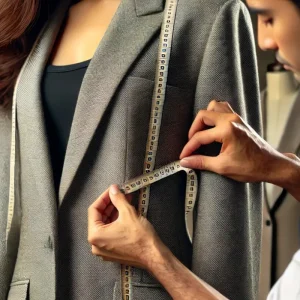No products in the cart.
Length Adjustment for Men’s Clothes
From ₹99.00
Length adjustments are a key element of tailoring Indian men’s garments for a perfect fit. Whether it’s shortening a kurta, adjusting the length of a sherwani, or ensuring that salwar and churidar fall correctly at the ankle, the length of a garment directly impacts both its comfort and aesthetic. A skilled tailor can carefully adjust the hem, add fabric where needed, and ensure the garment retains its original design integrity, ensuring the final fit is both functional and stylish.
Choose any of the below options tailored to your occasion.
Description
Length adjustments are a crucial aspect of tailoring Indian men’s garments, ensuring a perfect fit that enhances both comfort and style. Indian garments such as kurta, sherwani, bandhgala, salwar, churidar, and trousers often require specific alterations to ensure they fall at the right length, maintaining a clean, polished look while allowing for ease of movement. Here are some important pointers when making length adjustments for Indian men’s garments:
1. Adjusting the Length of Kurta:
Shortening or Lengthening the Kurta:
- Standard Length: For a kurta, the standard length usually falls around mid-thigh or just below the hips. Depending on the style and preference, you may need to shorten or lengthen it slightly.
- Shortening: If the kurta is too long, it can be shortened by taking up the hemline. When shortening, make sure to retain the side slits (if present) or adjust them accordingly to maintain the garment’s balance and ease of movement.
- Lengthening: If the kurta is too short, it can be lengthened by adding extra fabric to the hemline. If there’s not enough seam allowance to work with, the tailor can add matching fabric at the hem or use a decorative border (like a contrast fabric or embroidery) to lengthen the kurta aesthetically.
Special Styles:
- Anarkali or A-Line Kurtas: For these styles, the length adjustment should be even around the circumference, ensuring the flare remains balanced after shortening or lengthening.
- Straight-Cut Kurtas: When adjusting a straight-cut kurta, make sure the hemline is level on all sides for a clean, straight appearance.
2. Adjusting the Length of Sherwani:
Shortening the Sherwani:
- Fit and Proportions: The sherwani should ideally end just below the knee or mid-thigh depending on the wearer’s height and body type. To shorten the sherwani, the tailor will take up the hemline carefully, maintaining the overall design lines and embellishments.
- Ensure Seam Integrity: If the sherwani has embellishments, border work, or fine embroidery along the hem, ensure that the shortening is done in a way that doesn’t disrupt the design. If necessary, the tailor can remove and reattach some portions of the embroidery to retain the pattern’s continuity.
Lengthening the Sherwani:
- Limited Seam Allowance: Lengthening a sherwani is a bit tricky, as there may not always be enough seam allowance. If additional length is needed, extra fabric can be added to the hem. In cases of rich fabrics or heavily embroidered sherwanis, the additional fabric should be coordinated with the existing material to ensure consistency in design and color.
- Consider Sleeve Length: If the sherwani is lengthened, sometimes the sleeve length needs adjustment as well to maintain balance between the body and sleeves.
3. Adjusting the Length of Bandhgala:
Shortening the Bandhgala:
- Length Guidelines: The bandhgala jacket typically ends around the waist or just below the hip. Shortening the jacket involves reducing the overall length while ensuring the jacket’s classic structured look is maintained.
- Ensure a Sharp Cut: The key to adjusting the length of a bandhgala jacket is to keep the edges sharp and neat, especially if the jacket is part of a formal ensemble. A tailor should ensure that any lapel or pocket placements aren’t disrupted when shortening the jacket.
Lengthening the Bandhgala:
- Limited Lengthening: Like sherwanis, bandhgala jackets typically don’t have much extra seam allowance for lengthening. If the jacket needs to be longer, matching fabric may need to be added to the hemline to ensure a smooth, professional finish.
- Maintaining Proportions: When lengthening, ensure that the proportions of the lapels, pockets, and button placements remain consistent with the original design.
4. Adjusting the Length of Salwar, Churidar, or Pajama:
Shortening the Salwar/Churidar:
- Traditional Fit: For salwar or churidar, the traditional fit is loose and gathered at the waist and ankles. If the length needs to be shortened, ensure that the gathered ankle area remains tight and doesn’t lose its traditional look.
- Shortening from the Bottom: Always shorten the salwar from the bottom hem rather than from the waist to maintain the traditional gathered effect at the ankle. The tapered fit at the ankle should remain consistent.
- Measuring Properly: The salwar should fall just above the ankle or touch the floor depending on the preferred style. Ensure that the length adjustment doesn’t disrupt the gathered pleat around the ankle.
Lengthening the Salwar/Churidar:
- Additional Fabric: Lengthening a salwar or churidar is generally tricky, as it often requires adding matching fabric to the hemline. If the original fabric is not available, a similar contrast fabric or embroidered border can be added for a design-forward lengthening.
- Maintaining the Fit: Ensure that the lengthening process doesn’t alter the natural gathering or pleating around the ankle. If fabric is added, make sure it aligns with the gathering technique.
5. Adjusting the Length of Trousers (Chinos, Suits):
Shortening Trousers:
- Classic Fit: The ideal length for trousers is generally around the top of the shoe or slightly touching the shoe. For formal trousers like those in a suit or bandhgala, the bottom of the trousers should just kiss the shoe without excess fabric bunching up.
- Break Adjustment: The break (the crease formed when the trousers meet the shoes) is crucial in formal attire. For a slim fit, the trousers should have little to no break. For a classic fit, there may be a small break at the front.
Lengthening Trousers:
- Matching Fabric: Lengthening trousers may require additional fabric, which can be tricky if the original fabric is not available. If needed, the tailor can add fabric to the hem or the cuffs if the original design includes them.
- Even Hemline: If trousers need to be lengthened, the hemline must be adjusted evenly to avoid unevenness in the legs. The tailor may also need to ensure that the crease is properly restored.
6. Adjusting the Length of Chikan, Cotton, or Linen Kurtas:
Shortening or Lengthening Casual Kurtas:
- Casual Fit: For cotton kurtas, linen kurtas, or chikan kurtas, the length may be slightly more relaxed and can be adjusted based on style preferences. Shortening or lengthening should consider the balance of the kurta’s casual look.
- Avoiding Disrupting the Design: For embroidered kurtas, always make sure to adjust the length carefully so that the embroidery near the hemline is not disrupted. If the hemline has decorative patterns, these should be preserved or carefully reapplied.
General Tips for Length Adjustments:
- Proper Measurements: Before making any adjustments, take accurate measurements to ensure that the length is consistent and flattering. Always consider the wearer’s height, body shape, and the garment’s intended style when deciding on the length.
- Seam Allowance: Ensure there is enough seam allowance in the garment before making any length adjustments. Some garments, like sherwanis or bandhgalas, may not have much seam allowance left for lengthening, so it’s essential to check before making the change.
- Symmetry: Ensure that both sides of the garment are even when adjusting the length. The adjustment should maintain the garment’s original design and proportions.
- Style Consistency: Whether you are shortening or lengthening, the proportions and overall design of the garment should be maintained. Keep an eye on slits, hems, and trims to ensure the style remains consistent.






